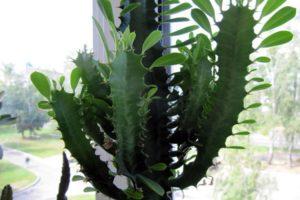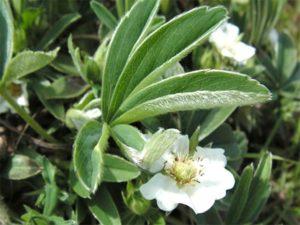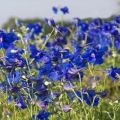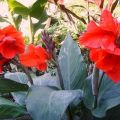Description of the best varieties of New Zealand delphinium and its cultivation
New Zealand delphiniums are striking in their beauty and uniqueness. The plant looks like a giant, as it reaches a height of 2 m. A powerful stem is covered with large double flowers of various colors. Due to its durability and decorative qualities, they differ significantly from other varieties of delphinium.
Characteristics and description of the New Zealand delphinium
From 2 m in height, the brush is 65-70 cm in length. The opened bud reaches 11 cm in diameter. Depending on the variety, the flowers are ordinary, double and semi-double. The bottom of the delphinium is abundantly covered with greenery. The dissected leaves are colored deep green. In the same place, a delphinium can grow from 6 to 9 years.
Flowering begins in late June and lasts until mid-August. During this period, faded brushes are cut off. Thus, they stimulate the re-flowering of the New Zealand delphinium.
Cultivars
New Zealand delphiniums are considered the most popular, as they have many perennial varieties:
- The Queen of Spades. The plant is prized for its large, velvety flowers of a black and raspberry hue. Thanks to the strong corrugation, they look sophisticated and gentle at the same time.
- Giant Lime. Unlike other representatives of the New Zealand group, Lime grows up to 2.5 m in height. The flowers are completely double with a yellow-green stripe in the middle. It does not require special care.
- Azure. The flowers of the plant are painted in blue tones. It is considered a favorite variety as it blooms twice a season.
- Dusky Maiden. Delphinium is tall. The flowers are delicate, large in diameter and pink in color. The buds have a brown or black eye.
- The bride's bouquet. A plant with super-large flowers that look good on lush greenery.
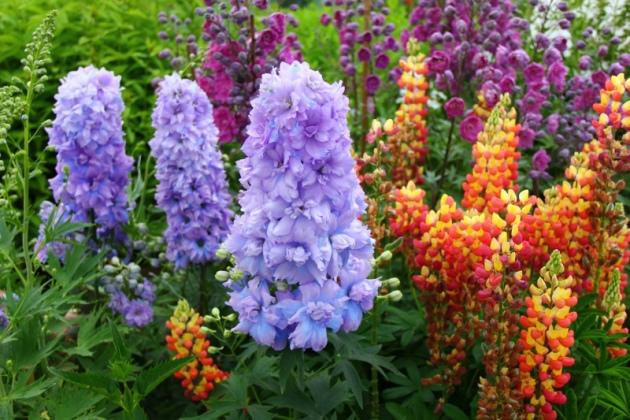
The varieties of the New Zealand delphinium are represented by plants with a height of 1 to 2.5 m. All have large double and voluminous flowers. Some bloom twice a season.
Plant propagation methods
The successful growth of a delphinium on a plot of land depends on the method of planting the plant and care. The gardener needs to know things like when to sow seeds, growing conditions, watering, and more. Growing up is not such a difficult procedure if you take the time to do it.
How to grow a flower in a summer cottage?
Despite the luxury and sophistication, the flower is unpretentious. Able to endure winter frosts with no need for shelter.The breeding method is the division of the bush, which is carried out in the spring. The parts into which the plant is divided should have 2-3 healthy branches.
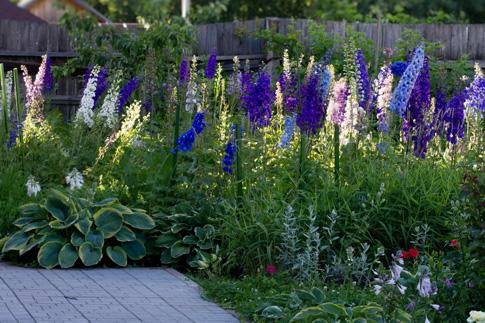
Dividing the bush is not the most popular breeding method. Most often, flower growers resort to planting seeds. Moreover, the material is harvested at home, if there is an opportunity and desire.
Seed preparation and treatment
Before planting in the soil, a disinfection procedure must be carried out. The seeds are spread over gauze and dipped in a concentrated solution of potassium permanganate. This is followed by the process of washing the planting material in clean water. After soaking in Epin, they are dried.
Sowing seeds for seedlings
A small container is filled with soil, trampling it down slightly. After the seeds are distributed over the surface, they are covered with soil 3-4 cm. The soil is sprayed with warm water, and the container is covered with a black film. In the dark, the seeds will sprout faster and can be replanted.

Soil preparation
The soil is a mixture of compost, peat, earth and sand. Perlite added to the soil makes it loose. One part of the substance is taken to 10 parts of the soil. Before filling the containers, the soil is heated in the oven in order to destroy weed seeds and fungal spores.
Transplanting seedlings to a permanent place
To determine if it's time to plant a plant in a permanent place, examine the root. He must wrap the entire earthy ball in the pot.
The sprouts can be easily removed from the container, while the roots remain intact.
Further care of the flower
After transplanting to a permanent place, they begin to look after the flower.
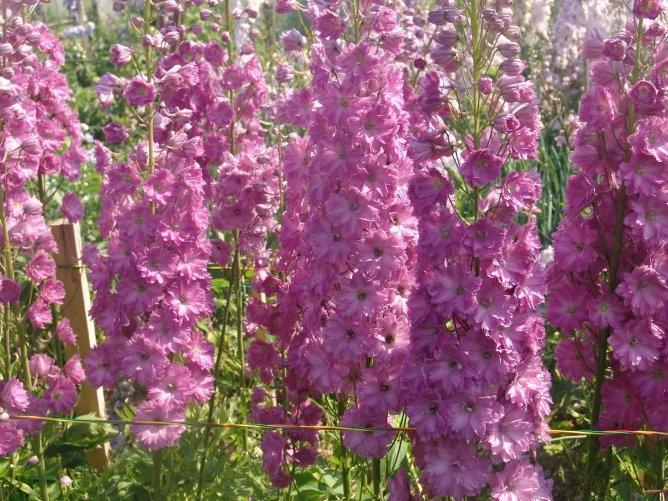
Watering and feeding rules
The giant needs regular hydration. It is not necessary to water the plant too often and abundantly, since a black leg can attack the plantings, and then they will die. Watering should be moderate.
As soon as the plant reaches a height of 15 cm, the first feeding is carried out.
Manure is diluted with water, the plant is watered, after which the soil is loosened and weeds are removed.
Pruning
Delphiniums that have reached 25 cm in height are subject to thinning. The purpose of the procedure is to obtain larger inflorescences with an intense color. On average, no more than 5 branches are left on one bush. Pruning promotes air circulation, increasing the giant's resistance to plant diseases.
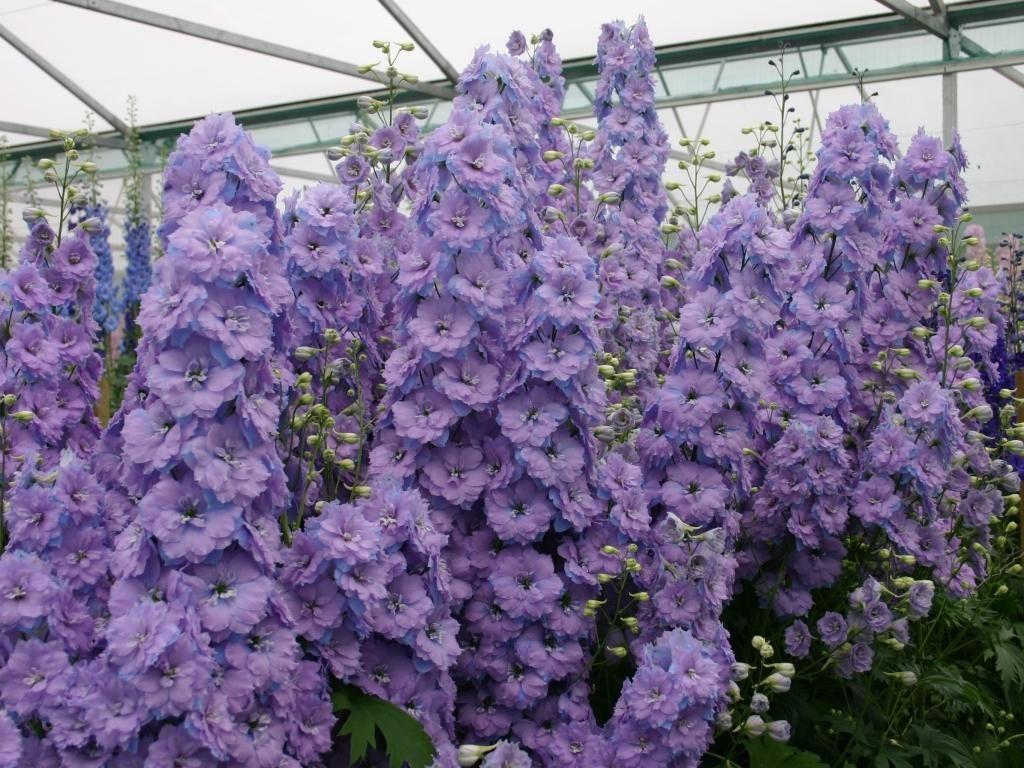
Thin and weak stems near the soil surface are subject to pruning. The cut is processed with an activated carbon tablet, ground into powder. If a heel remains on the cut branches, they are rooted.
Disease and pest control methods
In the middle of summer, the delphinium is affected by powdery mildew. If urgent measures are not taken, the aboveground part will die in a few days. The giant is treated with "Topaz" or "Fundazol".
As a result of aphid parasitism, the shrub becomes covered with ring spot. Affected stems are cut off. To prevent re-infection with parasites, plantings are treated with "Karbofos" or "Aktellik".

Gardeners have to treat the plant for black spot. For this, the "Tetracycline" tablet is diluted in 1 liter of water. Hibiscus is sprayed with the solution. Specimens in an unreleased form of the disease lend themselves to treatment.
Slugs and delphinium fly are the most dangerous plant pests. Lay eggs in flower buds. You can get rid of parasites with the help of insecticidal preparations. Bleach placed near the delphinium plantings will scare away slugs.
Growing a New Zealand delphinium is a difficult task that requires certain knowledge and minimal experience. If you approach the process with great responsibility, even a beginner will be pleased with the plant with large and beautiful flowers. Optimal living conditions and care will do the trick.
